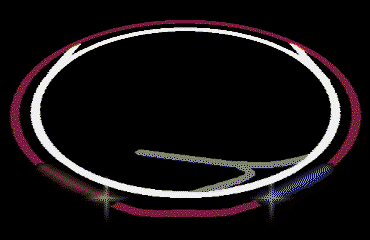
The synchrotron accepts the electrons (at 300 MeV) or positrons (150 to 200 MeV) from the linac and accelerates them to the energy at which they are stored in CESR, typically 5 GeV (5000 MeV). For most of the circumference of the ring the particles travel in vacuum between the poles of bending magnets, arranged in 192 3-meter long sections. At four places in the ring the beam passes through a 3-meter long linear accelerator. After a bunch of electrons or positrons has made 4,000 circuits around the ring (in about a hundredth of a second), it reaches its maximum energy and is injected into the storage ring. The entire acceleration cycle is repeated 60 times per second for about 10 minutes, first clockwise with positrons, then counterclockwise with electrons, until the required beam currents are built up in the storage ring. At an energy of 5 GeV the electrons and positrons are traveling at 99.9999995% of the speed of light.